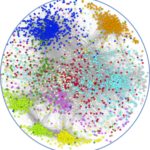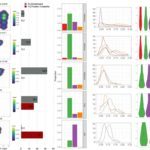Link to Pubmed [PMID] – 38461968
Link to DOI – 10.1016/j.micinf.2024.105321
Microbes Infect 2024 ; 26(4): 105321
Rabies virus (RABV) is a lethal neurotropic virus that causes 60,000 human deaths every year globally. RABV infection is characterized by the suppression of the interferon (IFN)-mediated antiviral response. However, molecular mechanisms leading to RABV sensing by RIG-I-like receptors (RLR) that initiates IFN signaling currently remain elusive. Here, we showed that RABV RNAs are primarily recognized by the RIG-I RLR, resulting in an IFN response in the infected cells, but this response varied according to the type of RABV used. Pathogenic RABV strain RNAs, Tha, were poorly detected in the cytosol by RIG-I and therefore caused a weak antiviral response. However, we revealed a strong IFN activity triggered by the attenuated RABV vaccine strain RNAs, SAD, mediated by RIG-I. We characterized two major 5′ copy-back defective interfering (5’cb DI) genomes generated during SAD replication. Furthermore, we identified an interaction between 5’cb DI genomes, and RIG-I correlated with a high stimulation of the type I IFN signaling. This study indicates that wild-type RABV RNAs poorly activate the RIG-I pathway, while the presence of 5’cb DIs in the live-attenuated vaccine strain serves as an intrinsic adjuvant that strengthens its efficiency by enhancing RIG-I detection thus strongly stimulates the IFN response.













